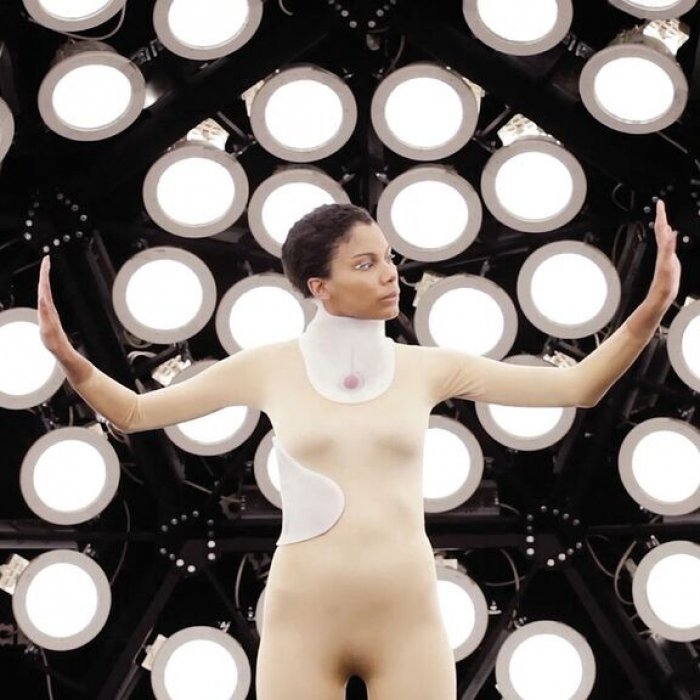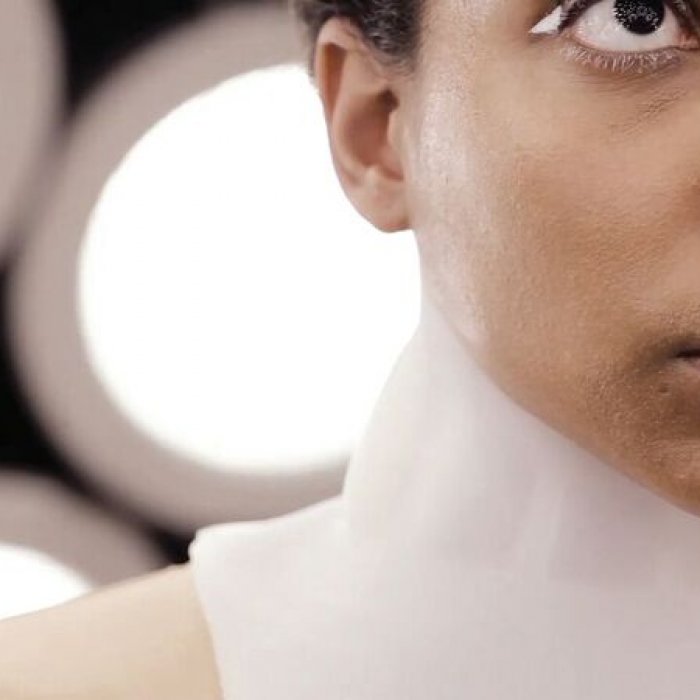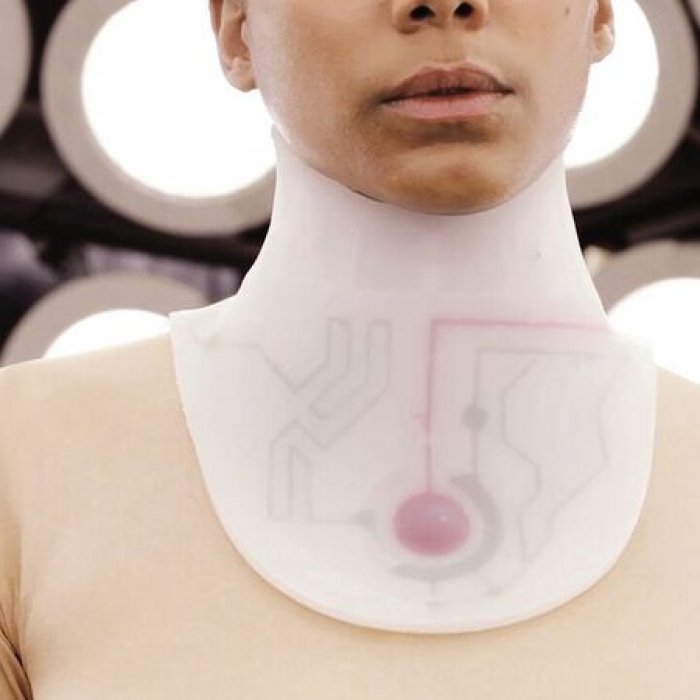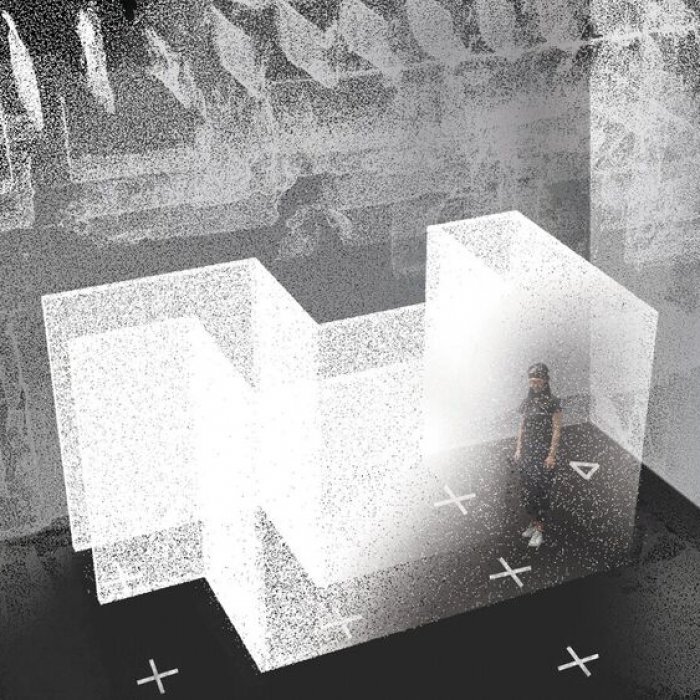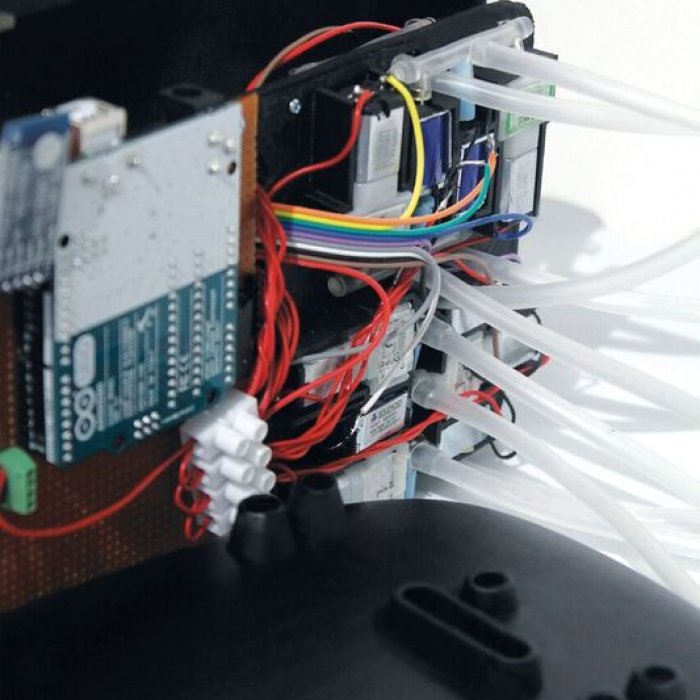Project Team:
Ava Aghakouchak & Maria Paneta & (research & design), Ruairi Glynn, Fiona Zisch, Vincent Hygh (tutors).
Short Film team: Mariana Muñoz Ortega (fashion director), Minjoo Chae (cinematographer), Ophelia Aasa (model), Anita-Beatrix Gerecs (hair & make-up Artist), Jon Hopkins (audio), Peter Raynham (Bartlett Artificial Sky)
Sarotis, a Greek word for scanner, is a series of soft robotic prosthesis combined for the first time with 3D vision systems to create a whole new way of sensing space through the body. It is predicted that by 2020, 5.4 billion mobile devices will feature 3D sensors enabling any user to scan and store their environments. If 3D vision technologies turn out to be as successful as their 2D predecessors, 70% of the world's population is expected to be capable of scanning, storing and analysing their environments.
Sarotis, developed at the Interactive Architecture Lab, Bartlett UCL, aims to explore how 3D vision technologies will change the way humans see and interact with the world. It looks into possible intimate wearable technology futures and examines how advanced vision systems and other sensory technologies will possibly be connected directly to the body through their soft interfaces.As part of the study an experimental prosthesis and a film were produced. The prosthesis was designed to study how one's awareness of space can be amplified using live 3D scanning technologies that control the inflation and deflation of soft robotic wearables. The speculative film invites the viewer to consider how fluidic hydrogel interfaces may dissolve the distinction between our own physiology and that of the softening machines that will extend our bodies.
Other possible applications of the project include assisting the blind or visually impaired with navigation, or in providing haptic feedback for virtual reality environments.
Project developed and released by Interactive Architecture Lab in the Bartlett led by Ruairi Glynn.

